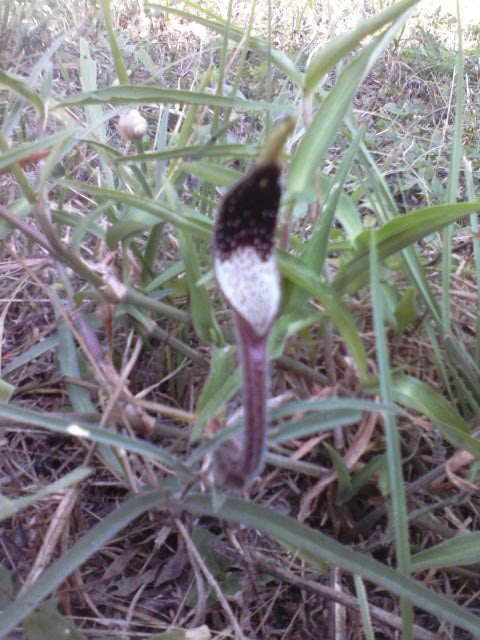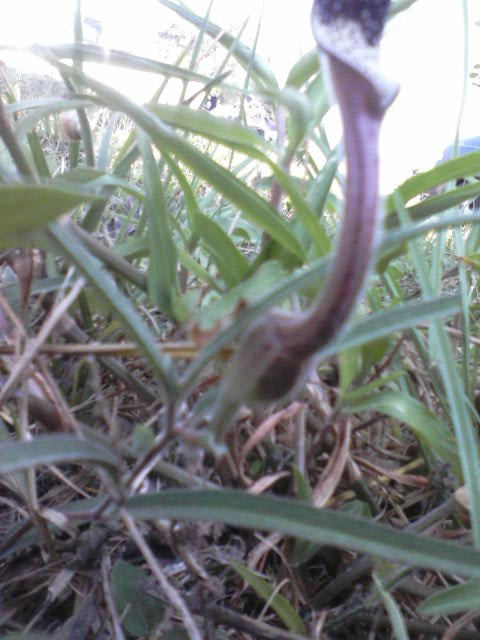Question pitcher
pitcher
 Pitcher bulb
Pitcher bulb
QUESTION: So I came across this plant growing in my bf's front yard and have been trying to identify it with no avail. I really don't know much about these type of plants but know I found it in a pretty weird location: Blooming in the middle of June, like 100*F outside, drought conditions, dry caliche Texan soil, growing under a tree where it would still receive almost full sunlight. I didn't have a camera only my phone so the pictures are not of best quality, sorry. But it had slightly thick fleshiness to the flower bit, but thin light colored leaves like blades of grass. It was growing by spreading out close to the ground. I'd estimate the pitcher bit to be about 1.5-2 inches tall. Any help with identifying is greatly appreciated. Thanks in advance!
ANSWER: Hello Raych'll,
No pitcher plant I know of, from any part of the world, grows in the kind of conditions you described. It is a bit blurry, but it looks like it is growing from part of the grass in that area. Are you sure it is not a deformed grass stalk?
---------- FOLLOW-UP ----------
QUESTION: Thanks for the quick response. The habitat is what threw me off as well. It was surrounded by grass and sticker plants. I don't think there's any way it was deformed grass since there were several of the pitcher shaped flowers and they had the bulbous bases. Also there was definite texture differences between the very narrow, thin bladed leaves and the thicker flower as well as the color difference. When I returned the next day (of course with a camera) to the same spot all of the pitchers had shriveled up. Are there false pitcher plants? Think I could have found a new species :D ?
AnswerIf the "pitchers" are flowers, then they are not pitcher plants. Pitcher plants produce leaves shaped like pitchers. You may need to look further afield and ask an expert of non-carnivorous plants what they think it may be. One good avenue would be to take a sample of the plant to your nearest nursery or university and ask an expert on plants in general about it. A botany professor would likely be able to tell you what species it is and if it is even a new species or not.







